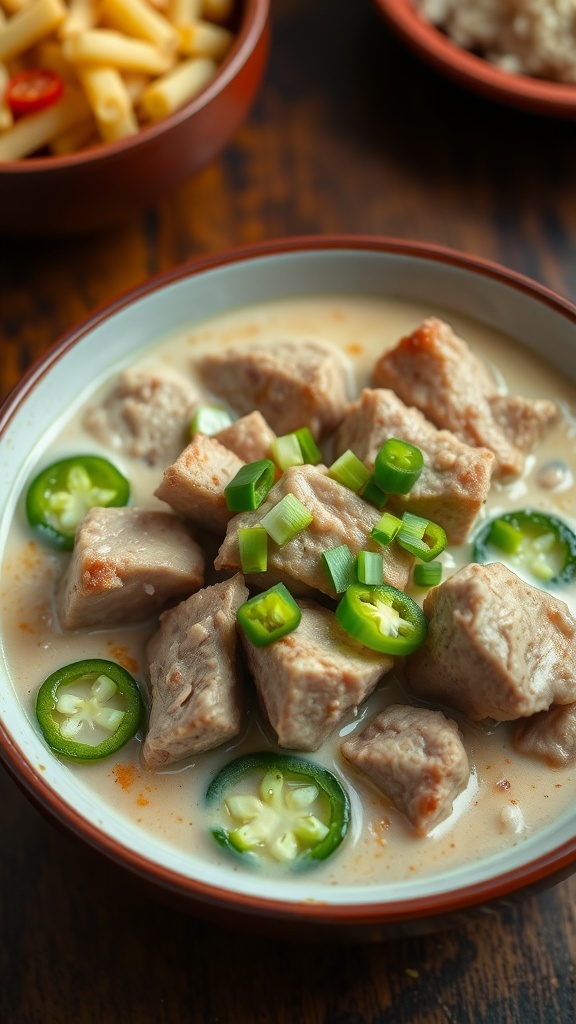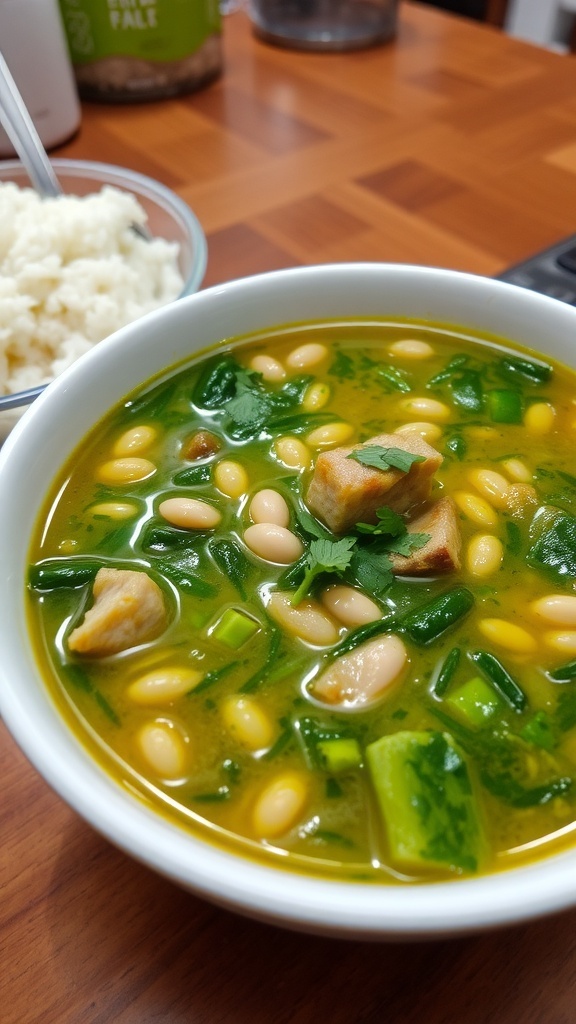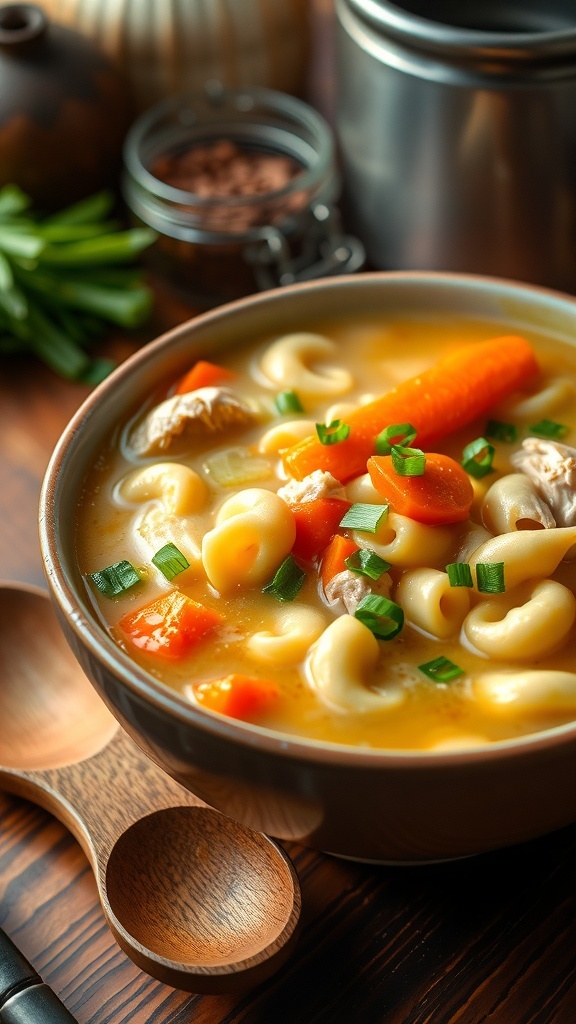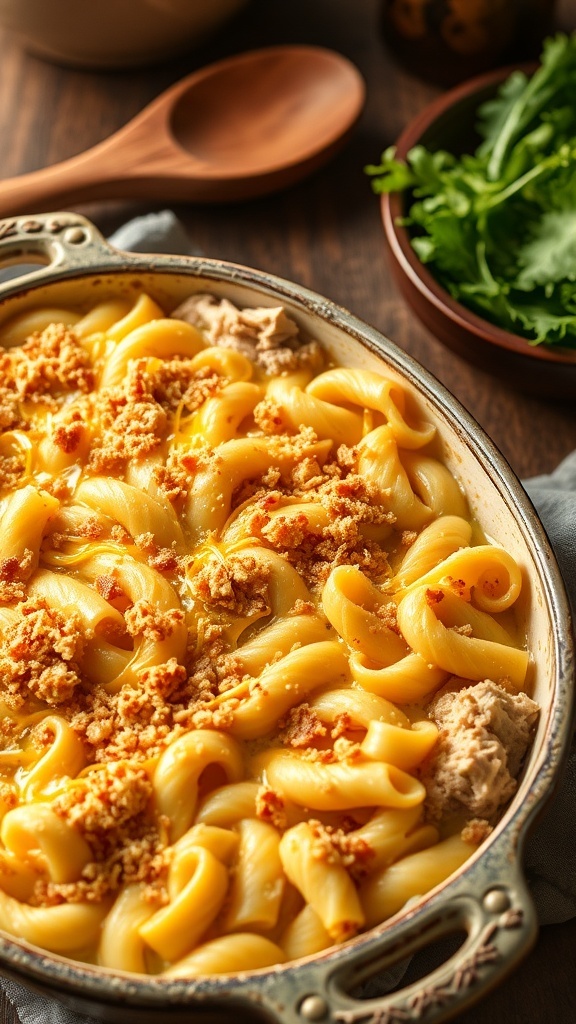Cheeseburger soup is a creamy, hearty dish that tastes just like your favorite burger, but in a warm bowl. It combines ground beef, potatoes, cheese, and vegetables in a rich broth. This soup is an easy way to enjoy all the flavors of a cheeseburger without the bun.
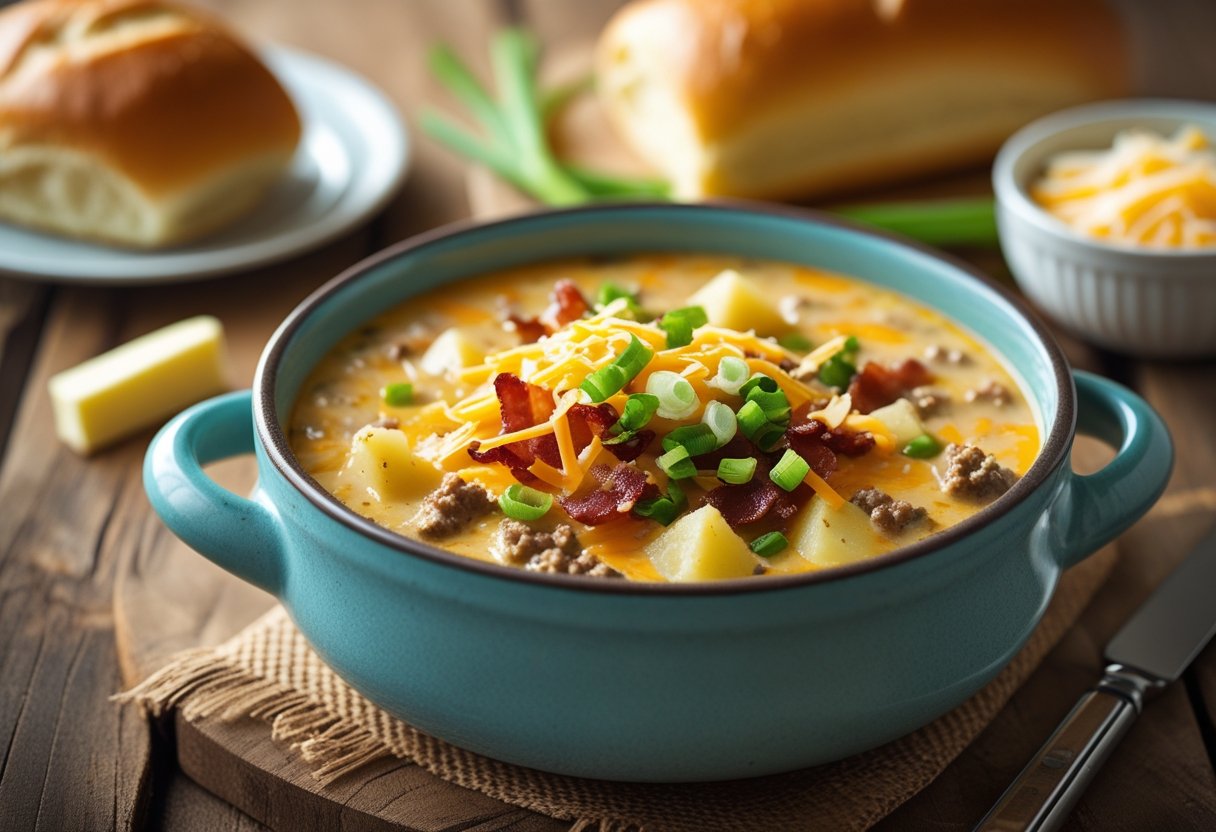
I like it because it’s simple to make and perfect for cold days when you want something filling and comforting. You can customize it with ingredients like bacon, sour cream, or pickles to match your taste.
If you love classic burgers but want a cozy twist, cheeseburger soup is a great choice. It’s a meal that brings the best parts of a burger into a creamy, satisfying soup you’ll want to make again and again.
What Is Cheeseburger Soup?
Cheeseburger soup combines the main flavors of a cheeseburger into a warm, creamy soup. It uses ground beef, cheese, vegetables, and seasonings to create a rich, comforting dish. The soup is thick, hearty, and easy to prepare, often enjoyed in colder weather.
History and Origins
Cheeseburger soup likely started as a way to enjoy cheeseburger flavors in a different form. It has roots in American cooking but does not have a clear inventor or exact time of origin. The idea of turning classic meals into soups became popular in home cooking during the 20th century.
Many versions of cheeseburger soup appeared as home cooks combined ground beef, cheese, and vegetables into thick broths. It fits into the trend of comfort food, especially in regions with cold winters where warm, filling dishes are common. The soup reflects American tastes for creamy, cheesy, and savory meals.
Key Characteristics
The soup features ground beef as the protein, often browned and crumbled. Potatoes and vegetables like celery or carrots add texture and flavor.
A creamy base made from milk or cream is combined with melted cheese, usually cheddar. The cheese gives the soup a thick, creamy texture and a strong savory taste. Seasonings may include salt, pepper, garlic, and onion powder.
Common features of cheeseburger soup include:
- Rich, cheesy broth
- Tender chunks of potatoes and vegetables
- Well-seasoned ground beef
- A creamy texture that mimics melted cheese on a burger
Comparison to Other Soups
Cheeseburger soup stands out because it mimics a specific food— a cheeseburger—in a bowl. Unlike vegetable or chicken soups, it focuses heavily on meat and cheese for flavor rather than broth or herbs alone.
It differs from chili by having a creamier base, lower spice levels, and more cheese. While chowders are also creamy, cheeseburger soup uses ground beef instead of seafood.
This soup fits in the family of thick, hearty American soups meant to be filling and easy to eat. It’s less brothy than stew but thicker than many traditional soups.
For more on delicious cheeseburger soup recipes and ideas, visit this detailed recipe and description.
Essential Ingredients
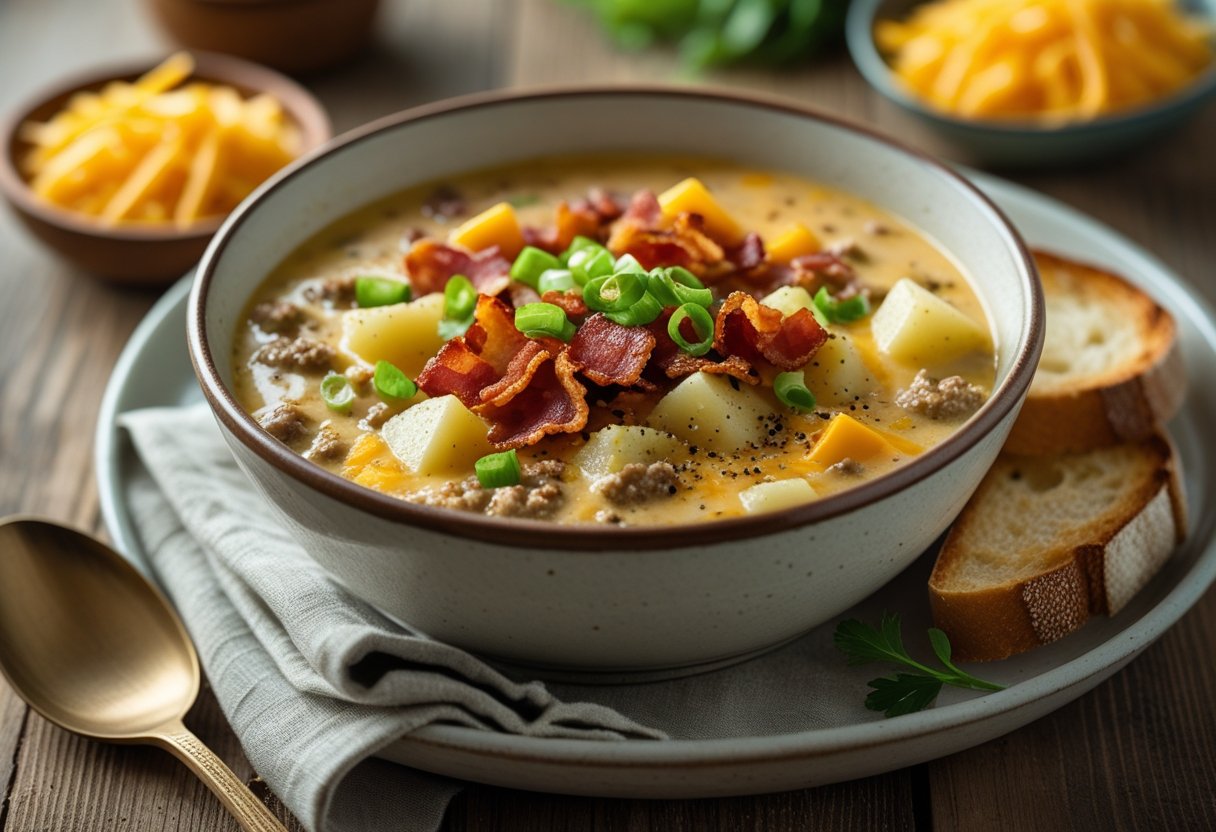
To make a rich and tasty cheeseburger soup, careful choice of ingredients matters. You need a solid protein base, fresh vegetables for flavor and texture, and the right kind of cheese to bring creaminess and depth.
Protein Choices
Ground beef is the heart of cheeseburger soup. I recommend using lean ground beef with about 85% lean meat to keep the soup flavorful but not greasy. You can also use ground turkey or chicken if you want a lighter option, but the beef’s fat adds important richness.
Cooking the meat first and browning it well builds the savory base flavor. Some recipes add crispy bacon to give an extra smoky taste, which pairs well with the cheese.
You don’t need fancy cuts—simple ground meat works best. It’s the texture and fat content that count most for this soup.
Vegetables and Aromatics
Potatoes are essential for a chewy, hearty feel. I prefer Yukon Gold or red potatoes because they hold their shape when cooked. Carrots and celery add sweetness and crunch, balancing the richness from the cheese and meat.
Onions provide a sharp aroma and deepen the soup’s flavor when sautéed until soft. Garlic can be added for an extra savory note, but don’t overpower the base flavors.
I usually dice the vegetables small so they cook evenly and blend smoothly with the creamy broth. Fresh vegetables work best over canned or frozen ones for taste and texture.
Cheese Selection
Choosing the right cheese defines the soup’s character. Sharp cheddar is my go-to because it melts well and offers a sharp, tangy flavor that matches cheeseburgers perfectly. You can also blend mild cheddar with sharper varieties for balance.
Avoid pre-shredded cheese if possible, as it contains anti-caking agents that can affect the soup’s smoothness. Shredding cheese yourself gives better melting and creamier texture.
Adding cheese slowly after the soup is off the heat prevents it from clumping. Cream cheese or Velveeta can be used for extra creaminess but are optional and change the taste.
For an even richer soup, you can add a little Parmesan cheese toward the end for a salty kick.
Step-by-Step Preparation Guide
I focus on gathering fresh ingredients and prepping them carefully to get the best flavor. Then, I follow a clear cooking process, paying attention to timing and heat. Finally, I use some simple tricks to ensure the soup’s texture is just right.
Preparation of Ingredients
First, I brown the ground beef in a large pot or Dutch oven to cook it fully and get rid of excess fat. I drain the fat to keep the soup from being greasy. Next, I chop onions, carrots, celery, and garlic finely to sauté them evenly.
For the potatoes, I use tender but firm types, cutting them into small cubes so they cook through but don’t fall apart. I also measure shredded cheddar cheese and keep it ready to melt in later. Having all ingredients ready means the cooking steps go smoothly.
Cooking Instructions
I start by browning the beef over medium heat until it’s no longer pink. Then, I remove the beef and set it aside. Using the same pot, I add olive oil and sauté the vegetables until they are soft—about 5 minutes.
Next, I return the beef to the pot and add broth, potatoes, and seasonings like salt and pepper. I simmer the soup until the potatoes become tender, usually about 15 minutes. Finally, I stir in the shredded cheese and milk or cream, heating gently until everything is melted and creamy without boiling.
Tips for Best Texture
To avoid a watery soup, I always drain excess fat from the beef and use a moderate amount of liquid. Adding cheese slowly while stirring helps it melt evenly without clumping or separating.
I choose potatoes that hold their shape and avoid overcooking them to keep a good bite. Stirring gently near the end keeps the soup smooth and creamy. If the soup thickens too much, a splash of milk or broth can adjust the texture quickly.
For crisp contrast, serving with croutons adds a good crunch to the creamy base.
Learn more about this method at Easy Cheeseburger Soup.
Variations on Cheeseburger Soup
Cheeseburger soup can change a lot based on what you want from it. Whether you need fewer carbs, want to skip meat, or crave a little heat, you can adjust the recipe easily. These tweaks keep the main flavors but suit different diets and tastes.
Low-Carb and Keto Options
For a low-carb or keto-friendly version, I remove starchy vegetables like potatoes and carrots. Instead, I add more cheese and use heavy cream to keep the soup rich and creamy. This helps keep the carbs low while still giving me the thick texture I want.
I also swap regular flour for a low-carb thickener like xanthan gum. Using ground turkey or chicken instead of beef can reduce fat if needed. Skipping high-carb sides like bread or croutons keeps the dish within keto limits but still satisfying.
Vegetarian Adaptations
When I want a vegetarian version, I replace ground beef with plant-based crumbles or extra mushrooms. Mushrooms add a meaty texture and umami flavor that works well in this soup.
I use vegetable broth instead of beef broth to keep it vegetarian. Adding more vegetables like bell peppers or zucchini gives the soup more bulk and freshness without losing the comforting feel. For cheese, I stick with sharp cheddar or try dairy-free cheese for a vegan option.
Spicy Versions
To add some heat, I like to include ingredients like diced jalapeños or a sprinkle of cayenne pepper. These bring a warm kick that balances the creamy cheese well.
You can also add hot sauce or chipotle powder for smoky spiciness. I avoid overpowering the burger flavor and keep the spices moderate. Topping the soup with sliced pickled jalapeños or crushed red pepper flakes adds extra spice right before serving.
This way, the soup feels bright and lively without losing its rich cheeseburger taste.
For more ideas, check cheeseburger soup recipe variations here.
Serving Suggestions
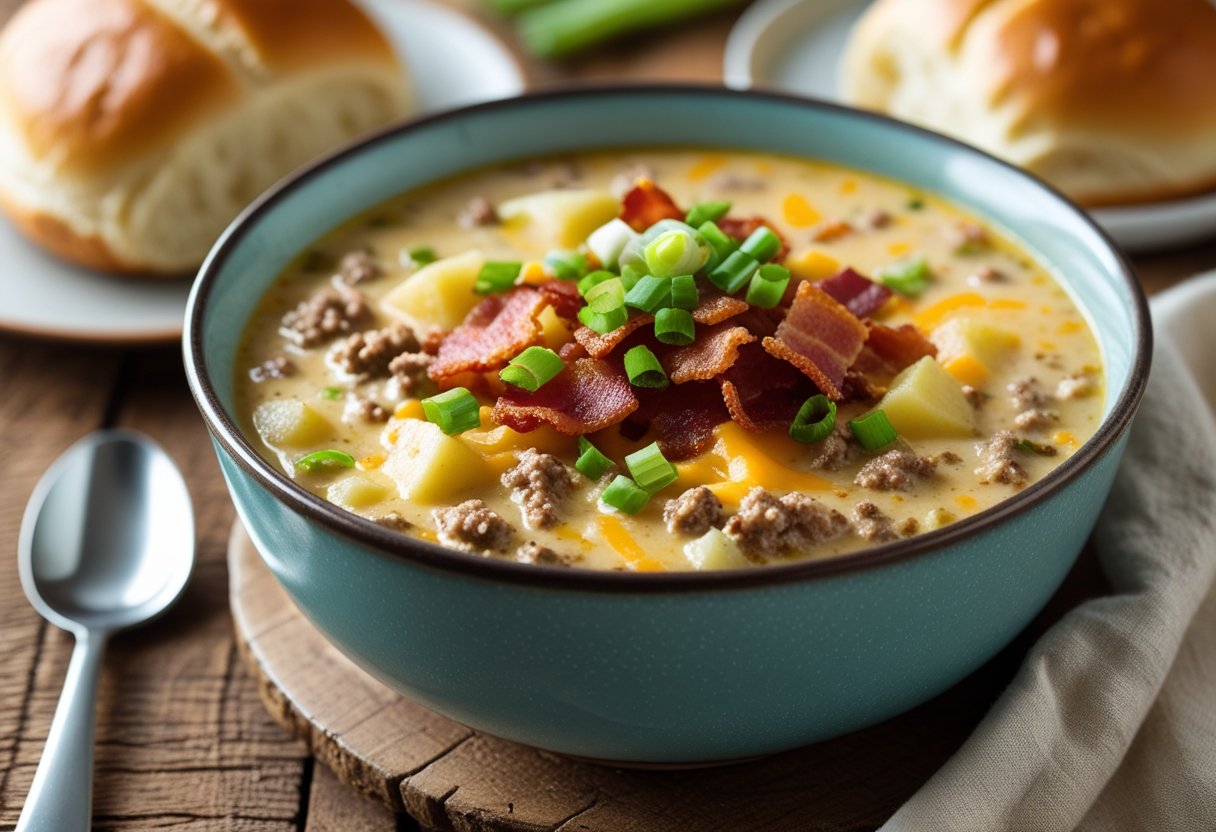
Cheeseburger soup works great with simple toppings and sides that enhance its rich, cheesy flavor. You can make the meal more interesting by adding crunchy or fresh elements. I focus on easy options that complement the soup without overpowering it.
Garnishes and Toppings
I like to top cheeseburger soup with bacon crumbles or crispy onion rings for an added crunch. These bring a smoky texture that pairs well with the creamy soup.
Extra shredded cheddar cheese is always a good choice. It melts on top and boosts the cheesy taste.
You can also add small dabs of ketchup and mustard directly on the soup for that classic cheeseburger flavor. Pickle slices or chopped green onions add a nice tang and fresh bite.
A few chopped parsley or chives provide a simple color contrast that makes the dish look more appealing.
Best Side Dishes
To balance the richness of the soup, I serve it with garlic bread or crusty bread for dipping. The bread soaks up the soup and adds a buttery flavor.
Fries, especially sweet potato fries, are a tasty side to keep the cheeseburger theme going. Macaroni and cheese works if you want something creamy but different.
A light green salad with a vinaigrette cuts through the heaviness of the soup and adds freshness.
Onion rings or a small portion of coleslaw also add good texture contrast and flavor. These sides make the meal complete without stealing the show.
For more ideas, check options for serving cheeseburger soup with different sides.
Storage and Reheating Tips
I know that keeping cheeseburger soup fresh and tasty depends a lot on how you store and reheat it. Paying attention to the right temperature and timing helps maintain flavor and texture.
Refrigeration Guidelines
I always let cheeseburger soup cool completely before putting it in the fridge. Hot soup can raise the fridge temperature, which risks spoilage.
Once cooled, I store the soup in an airtight container. This prevents it from absorbing other smells and keeps it fresh. I recommend eating refrigerated soup within 3 to 4 days to avoid any risk of foodborne illness.
When reheating, I pour the soup into a pot and warm it on low heat. Stirring often helps keep the cheese melted smoothly and stops the soup from burning. Adding a little broth or water can bring back a creamy texture if the soup has thickened too much.
Freezing Recommendations
I freeze cheeseburger soup in small portions for easy use later. Using airtight, freezer-safe containers or heavy-duty freezer bags helps prevent freezer burn.
The soup can be frozen for up to 2 months. I label the containers with the freezing date to track freshness. When it’s time to eat, I thaw the soup overnight in the fridge.
To reheat frozen soup, I warm it slowly on the stove while stirring. Sometimes, dairy in the soup may separate or change texture, so adding broth can restore creaminess. Avoid microwaving directly from frozen since uneven heating can spoil texture and flavor.
For more about freezing cheeseburger soup, see this link on freezer-friendly cheeseburger soup.
Nutritional Information
When I look at cheeseburger soup, I see a dish that packs a good amount of calories. One cup usually has around 180 to 340 calories, depending on the recipe and ingredients used. This range comes from variations in cheese, beef, and added vegetables.
Here’s a simple breakdown of key nutrients in one cup of typical cheeseburger soup:
| Nutrient | Amount |
|---|---|
| Calories | 184 – 340 |
| Protein | 12 – 20 g |
| Fat | 10 – 25 g |
| Carbohydrates | 10 – 20 g |
The protein mainly comes from ground beef and cheese. Fat varies based on the cut of beef and type of cheese used. Carbohydrates usually come from potatoes or flour used as a thickener.
I’ve found that healthier versions cut down on fat by using leaner beef and less cheese. Some recipes swap potatoes for cauliflower to reduce carbs. This makes the soup lighter but keeps a rich cheeseburger flavor.
If you want detailed nutrition facts for specific versions, sites like Nutritionix offer info on calories and serving sizes for cheeseburger soup. Checking those can help with meal planning or tracking intake.
You can explore the calorie content in more detail at this page for Cheeseburger Soup Calories and Nutrition.
Common Mistakes and How To Avoid Them
One common mistake I see when making cheeseburger soup is not draining the ground beef well. If you leave the fat, the soup can become greasy. Always drain the beef after browning to keep the soup rich but not oily.
Adding cheese too quickly can also ruin the texture. I learned to slowly add cheese over low heat. This helps the cheese melt smoothly without becoming grainy or clumpy.
Overcooking vegetables is another problem. I keep a close eye on carrots and celery while sautéing so they stay tender but not mushy.
Another mistake is rushing the soup’s simmer time. I let it cook just long enough for flavors to blend but not too long to avoid soggy potatoes or thickened broth.
Here is a quick list of what to avoid:
- Draining beef poorly
- Adding cheese too fast
- Overcooking vegetables
- Over-simmering the soup
Being careful with these steps makes a big difference in the final taste and texture. For more detailed tips on avoiding these mistakes, check out this guide on common cheeseburger soup mistakes.

